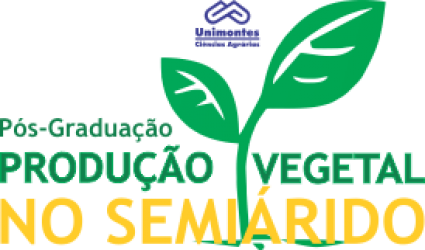- Version
- Download 8
- File Size 344.41 KB
- Create Date 16/06/2021
- Download
OTONI, Bruno da Silva. Caracterização e produção de dois híbridos do tomateiro (Licopersicon esculentum) cultivados sob diferentes níveis de sombreamento. 2010. 44 p. Dissertação (Mestrado em Produção Vegetal no Semiárido) – Universidade Estadual de Montes Claros, Janaúba, 2010.
A região norte-mineira é marcada por um verão de alta intensidade luminosa, o que consequentemente inviabiliza o cultivo de algumas hortaliças nessa época. Objetivando avaliar o rendimento agronômico e a qualidade do cultivo do tomateiro sob diferentes níveis de sombreamento, conduziu-se um experimento na empresa QUALIHORT, localizada na cidade de Nova Porteirinha, Minas Gerais. O delineamento experimental utilizado foi em blocos casualizados em esquema fatorial 2 X 4, com 4 repetições, sendo dois híbridos (Dominador e Giovanna) e quatro níveis de sombreamento (0%, 18%, 30%, 50%). O híbrido Dominador foi superior ao Giovanna com relação ao número total de folhas, número de folhas por planta, altura da planta, número total de frutos, número de frutos por planta. O ambiente com 50% de sombreamento condicionou maior altura das plantas. O número total de folhas, número total de frutos e número de frutos por planta foram maiores com a elevação do sombreamento. O maior crescimento vegetativo a 18%, 30% e 50% de sombreamento elevou a maior parte das características diretas de produção, ou seja, a produção e produtividade total, produção de frutos comerciais e, como consequência, produção e produtividade não comercial. A produtividade comercial foi mais elevada a 30% e 50% de sombreamento. Os diferentes níveis de sombreamento não alteraram significativamente as características avaliadas, pH, Sólidos Solúveis Totais (SST), Acidez Total Titulável (ATT) e Relação Sólidos Solúveis/Acidez Titulável (RSA). Com relação aos dois híbridos, observou-se maior valor médio de pH no Dominador, e maior valor médio de SST no Giovanna. O sombreamento de 50% foi o que proporcionou maior interceptação da radiação o que resultou em maior produção, produtividade e índice de área foliar. Nesse tratamento, obteve-se maior temperatura, porém a umidade relativa foi mais elevada nos tratamentos de 30 e 50% respectivamente.
Palavras-chave: Intensidade luminosa, ambiente protegido, cultivares.
Production and characterization of two hybrids of tomato (Lycopersicon esculentum) grown under different shading levels
The North of Minas Gerais State is marked by a summer of high light intensity, which makes unviable the cultivation of some vegetables in that season. To evaluate the agronomic yield and quality of tomato cultivation under different shading levels, an experiment was carried out at QUALIHORT company in Nova Porteirinha city, Minas Gerais. The experimental design was in randomized blocks in a factorial scheme 2 X 4 with four replications, being two hybrids (“Dominador” and “Giovanna”) and four shading levels (0%, 18%, 30%, 50%). The Dominador hybrid was superior to “Giovanna” in relation to the total leaves number, leaves number per plant, plant height, total fruit number, fruit number per plant. The environment with 50% shading provided greater plant height. The total leaves number, total fruit number and fruit number per plant were higher with increasing of shading. The greatest vegetative growth to 18%, 30% and 50% shading increased the most of the production characteristics, i.e., yield and total productivity, marketable fruit yield and, consequently, non- marketable production and productivity. The marketable productivity was highest at 30% and 50% shading. The different levels of shading did not significantly alter the traits pH, Total Soluble Solids (TSS), Total titratable acidity (TA) and ratio soluble solids/acidity (RSA). Concerning to the two hybrids, it was observed a higher mean value of pH in the “Dominant”, and higher mean value of SST in “Giovanna”. The 50%shading promoted the greater interception of radiation, what resulted in higher production, productivity and leaf area index. In that treatment, it was obtained the highest temperature, however the relative humidity was higher in the treatments of 30 and 50% respectively. KEY-WORDS: light intensity, protected environment, cultivars.

